Holywells
Park

The gates
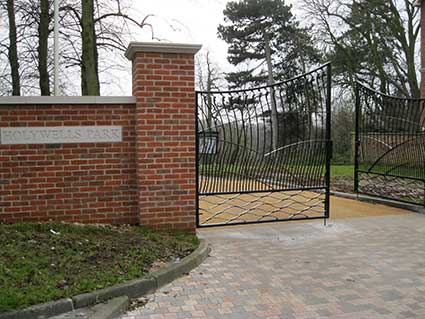 2014 images
2014 images
During the lottery-funded refurbishment of Holywells Park, these
fine gates (plus the paving) were installed on the Bishops Hill entrance. The brickwork
incorporates an excellent piece of hand-cut lettering incised on a
stone tablet: 'HOLYWELLS PARK'; clean serif'd capitals.
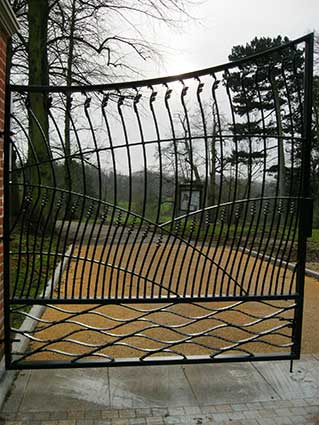
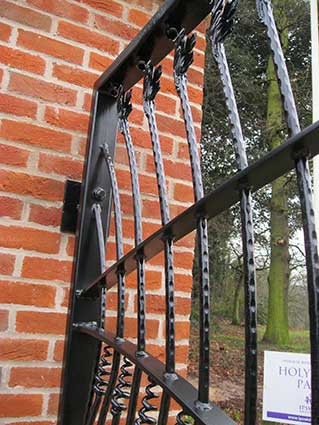
The wrought ironwork features water and fragmites reed motifs.
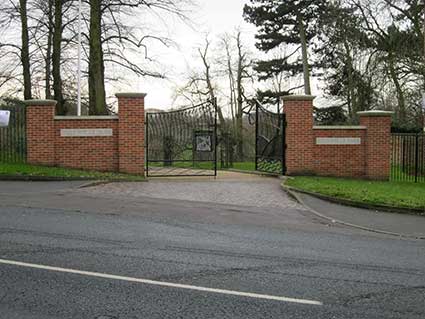
'Holy Wells'
The park is reputed to have been the site of the manor held
before the Norman Conquest by Queen Edith (c.1025-1075), wife of Edward
the Confessor (c.1003-1066). In the park is a large
moated site, still visible today around the children's play area, which
is probably where the Bishop of Norwich stayed when his duties brought
him to Suffolk. Our Bishops
Hill page has more on this. The major value of the
parkland is the spring water, plentiful and
pure. Our Street name derivations page
has more on
the name Holywells; contrary to popular belief the 'wells' and springs
here were not considered sacred. Thomas
Cobbold established his brewery in Harwich in
1723, shipping clean water from Ipswich. Eventually, he moved the
brewery to the Cliff, Ipswich in 1742 where he could be take advantage
of the proximity of the fresh water springs of Holywells for brewing
beer. The
Cobbolds had already started to buy land in this area but in 1811 John
Cobbold (1745-1835) bought
Pitt’s Farm (otherwise Raceground Farm – or the ‘old
cottle’ ), a basic Suffolk hall house.. He extended the original
farmhouse with a Regency-style west wing. His wife Elizabeth called it
‘Holy Wells’. There is a reference to Pitt’s Farm in a will of 1564
which mentions ‘Pytts over the hill’. [Information from Holywells Park
information board.] It is probably true that the Cobbold
family encouraged the use of the name Holywells for their house and
parkland to give them added caché. Thomas Gainsborough
(1727–1788) painted a well-known – and somewhat idealised – view of the
cascade of spring water ponds in the park, much of which is visible
today. The painting is part of the collection at Christchurch Mansion.
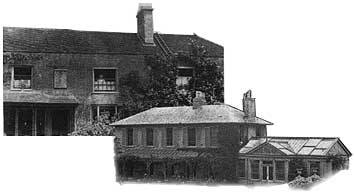
Above: Pitt's Farm at left with 'Holy Wells' at
right. Information
and images from Holywells Park information board
Below: a turn-of-the-19th/20th-century postcard of the Cobbold's
Holywells Mansion, built by John Cobbold in 1814, with the Orangery
(centre) and Stable block at right.
The park and mansion were presented to the town of Ipswich by Arthur
Churchman, Lord Woodbridge, the tobacco magnate; he also gifted the Chantry to the town and Elmhurst Park to Woodbridge. The footprint of the demolished
house is marked by paving and planting
in the park refurbishment which took place up to 2015. Ipswich
Borough Council received a grant of £2.8 million from the Heritage
Lottery Fund and Big Lottery Fund for the Holywells "Parks for People"
restoration project in July 2012.
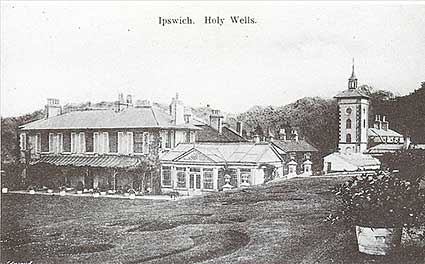 c.1900
c.1900
The Orangery
Although there isn't much lettering relating to the park, except the
memorial on the Myrtle Road
entrance, it is worth including some of the images from the restoration
work of the Stable Block and Orangery carried out over 2013-15. Both
these buildings relate to the Cobbold
mansion which was tragically demolished in 1963.

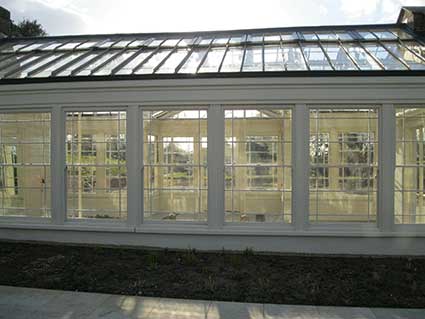 March 2015 images
March 2015 images
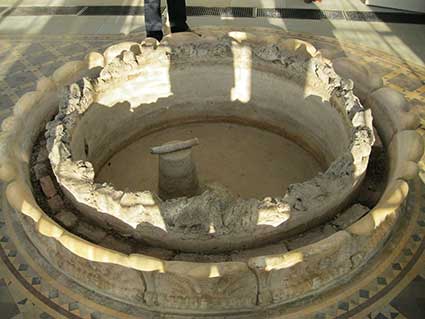

The pool; sadly it is not possible to reinstate the pool due to
health and safety problems, so it is now used as a planter.
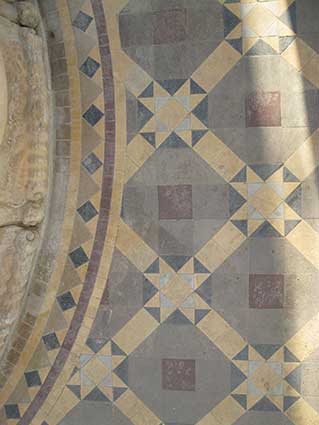
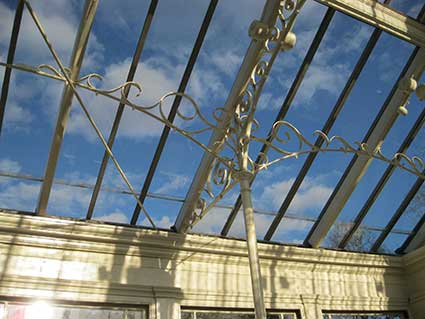
Decorative floor tiles in the orangery.
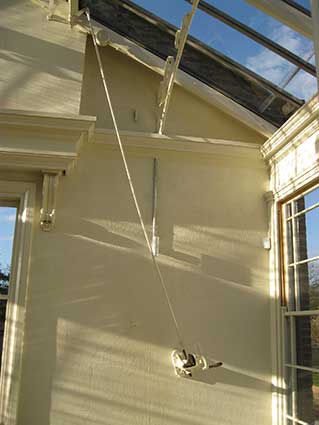

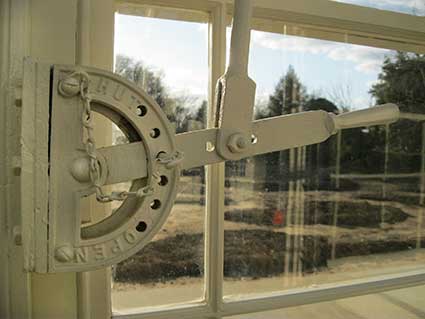
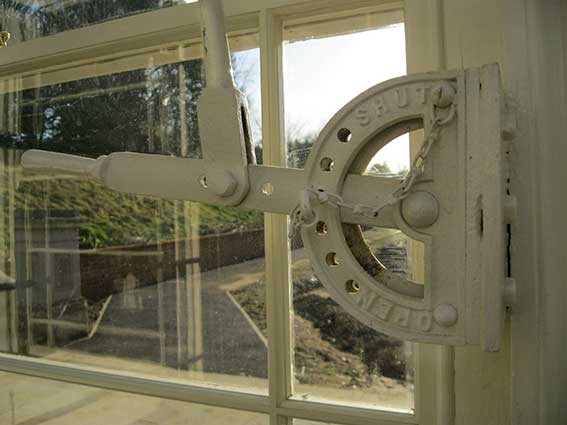
Raised lettering: 'SHUT ... OPEN' on the iron ventilation
adjusters.
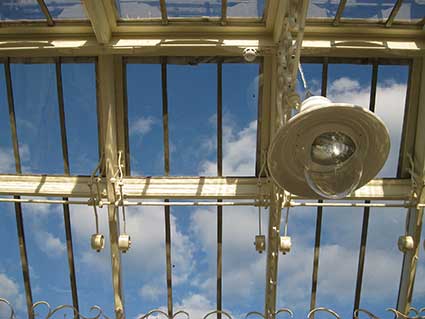
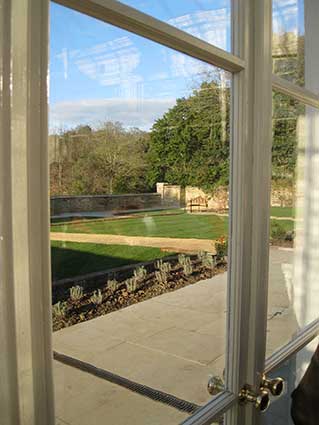
Above: the view of the early stage of the lawns and planted
borders.
The Stable Block
 2020
image courtesy Mandy Gaylard
2020
image courtesy Mandy Gaylard
Above: the clock tower is seen through the garden entrance to
the former Holywells House.
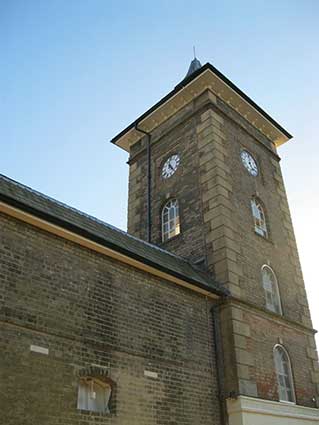


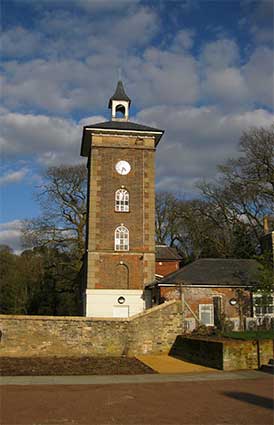
A clock on one of the faces of the tower was installed to match
the other two.
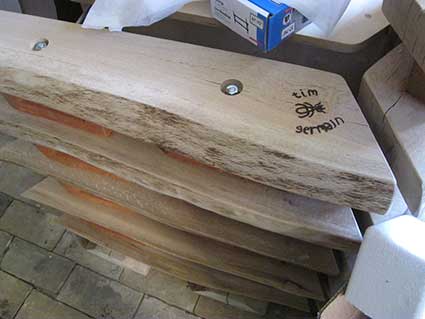
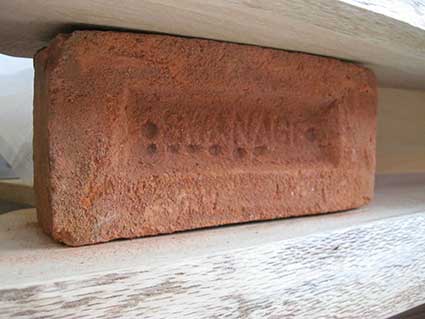
In the Stable Block café, Tim Germain's unusual counter features
timbers separated by distressed red bricks. In the frog of the brick,
the word 'SWANAGE'. For more on named bricks, see our Wherstead red page.
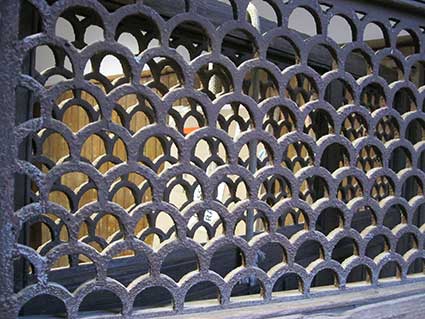
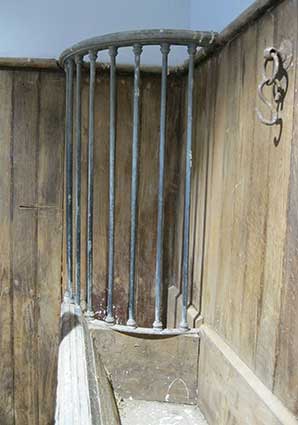
Decorative iron screens between the stable stalls, plus a corner
manger for straw and feeding trough.
See also our Lettered castings
index page.
Home
Please email any comments and contributions by clicking here.
Search Ipswich
Historic Lettering
©2004 Copyright
throughout the Ipswich
Historic Lettering site: Borin Van Loon
No reproduction of text or images without express written permission


 2014 images
2014 images



 c.1900
c.1900
 March 2015 images
March 2015 images









 2020
image courtesy Mandy Gaylard
2020
image courtesy Mandy Gaylard






